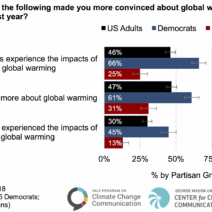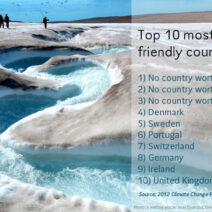Global warming, an insidious byproduct of human activity, casts a long shadow over the intricate web of food production. The repercussions of this phenomenon extend far beyond immediate agricultural yields; they penetrate into the very fabric of food security. As global temperatures rise, a myriad of factors converges to jeopardize our food systems, thereby creating a precarious situation for billions of people worldwide.
The increasing frequency and intensity of extreme weather events, such as droughts, floods, and storms, disrupt traditional agricultural patterns. These climatic anomalies do not merely threaten harvests; they obliterate livelihoods and precipitate food shortages. Farmers, often the first line of defense against hunger, confront the dual challenges of dwindling crop productivity and rising uncertainty. Adaptation becomes imperative, yet financial and technological resources are not uniformly available, exacerbating inequalities.
Furthermore, rising temperatures have a direct impact on crop physiology. Heat stress can diminish photosynthetic efficiency, leading to reduced yields of staple crops like wheat, rice, and maize. Such cereals form the backbone of global nutrition, and their decline has far-reaching implications. Additionally, pests and diseases thrive in warmer conditions, escalating challenges faced by farmers in pest management and crop protection. The very ecosystems that support agriculture are destabilized, leading to a cascading effect on the availability and quality of food.
Water scarcity has emerged as another formidable adversary of food security. The demand for water in agriculture is immense, constituting approximately 70% of global freshwater withdrawals. Global warming exacerbates existing water stress through altered precipitation patterns and increased evaporation rates. Regions that once enjoyed abundant water resources may find themselves grappling with unprecedented shortages. This dynamic is particularly concerning in areas already vulnerable due to socio-economic factors. The interdependence of water and food systems underscores the complexity of addressing these challenges.
Soil health is yet another casualty of climate change. Erosion, degradation, and desertification threaten arable land. This deterioration is often accelerated by both extreme weather and unsustainable farming practices. Healthy soils are essential for robust food production, and their loss leads to diminished crop resilience. Furthermore, practices aimed at mitigating climate impacts, such as monoculture and chemical inputs, can inadvertently compromise soil integrity, leading to diminished biodiversity and reduced yields over time.
Food security is not merely a question of availability; it also concerns access and utilization. Economic factors play a critical role in determining whether individuals can afford the food produced. As climate change disrupts economies, food prices may soar, making basic nutrition unattainable for vulnerable populations. It is a grim reality that, according to the Food and Agriculture Organization, climate change could push an additional 100 million people into hunger by 2030, further entrenching cycles of poverty and malnutrition.
As governments and organizations scramble to develop adaptive strategies, the urgency of innovation becomes paramount. Sustainable farming practices, equitable resource distribution, and investment in agricultural technology are vital to enhance resilience in food systems. Crop rotation, agroforestry, and integrated pest management are just a few of the methodologies that can help mitigate some effects brought forth by climate change. However, transitioning to these sustainable practices requires a concerted effort from policymakers, farmers, and consumers alike.
Moreover, education plays a pivotal role in fostering a culture of sustainability. Informing farmers about adaptive methods can empower them to face the challenges posed by global warming. An informed populace is better equipped to advocate for policies that address climate change and support initiatives geared toward sustainable agriculture. Furthermore, consumers must also recognize their role in this intricate system. Making conscientious choices about food sourcing, reducing waste, and supporting local farmers can collectively contribute to mitigating the impacts of climate change.
Food security is often viewed through the lens of calories and commodities, yet addressing the underlying systemic issues requires more than just an increase in agricultural output. It necessitates a holistic approach that recognizes the interconnected nature of food systems, ecosystems, and human health. Climate change is a multifaceted challenge that demands an equally multifaceted response.
International cooperation is essential in the quest for sustainable food security. Climate change knows no borders; thus, solutions must transcend political and geographical divides. Global initiatives, such as the Paris Agreement, aim to unify nations in combating climate change through standardized commitments and action. Such collaborations facilitate the sharing of knowledge, resources, and technology that can enhance food production resilience across different climates and regions.
In conclusion, the ramifications of global warming extend profoundly into food security, influencing agricultural practices, economic dynamics, and societal structures. It is imperative that global stakeholders recognize the urgency of this crisis and take decisive action. Only through collaboration, innovation, and education can we hope to create resilient food systems that withstand the challenges posed by an ever-changing climate. The time to act is now; the stakes are nothing short of humanity’s survival in an era marked by uncertainty and change.








